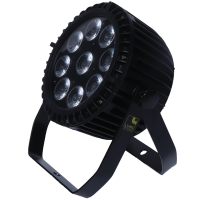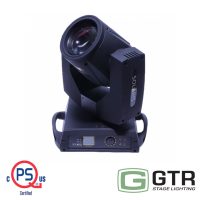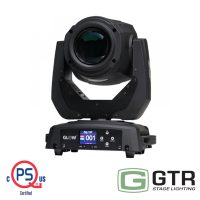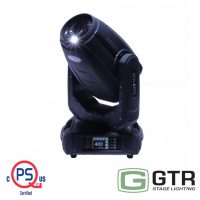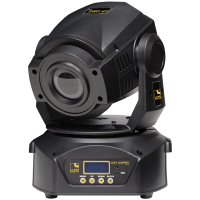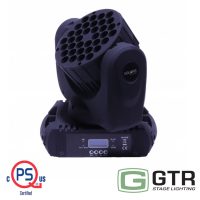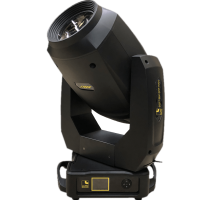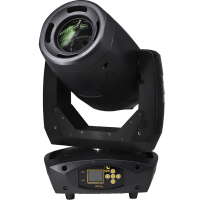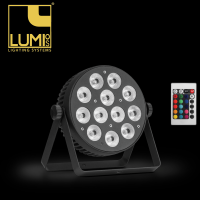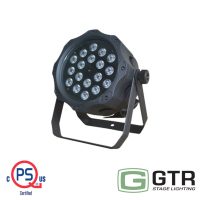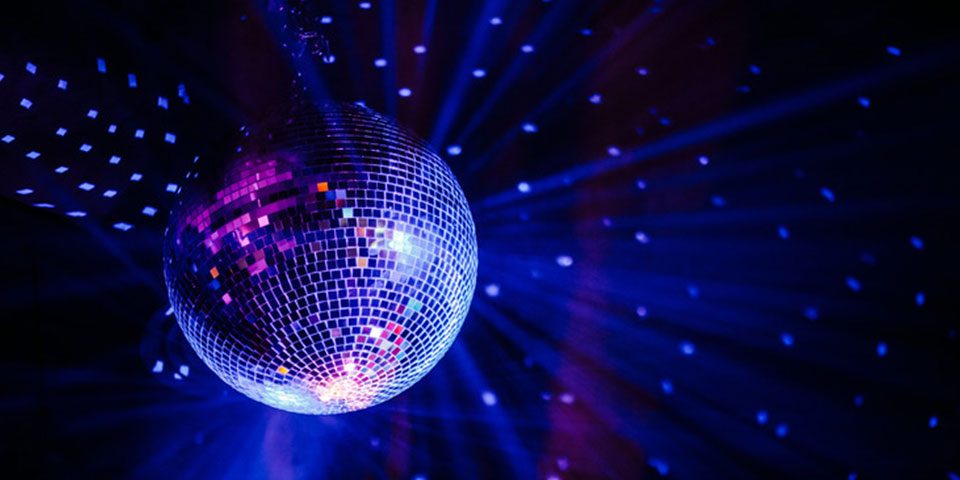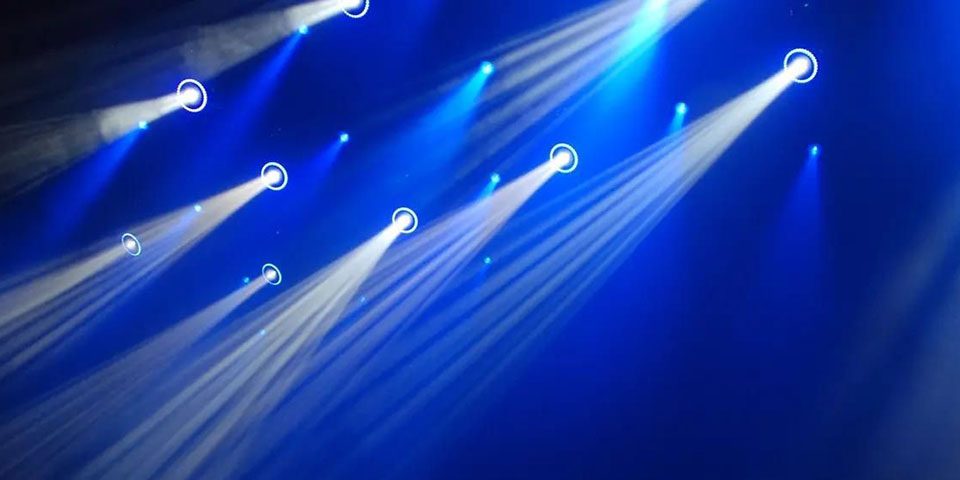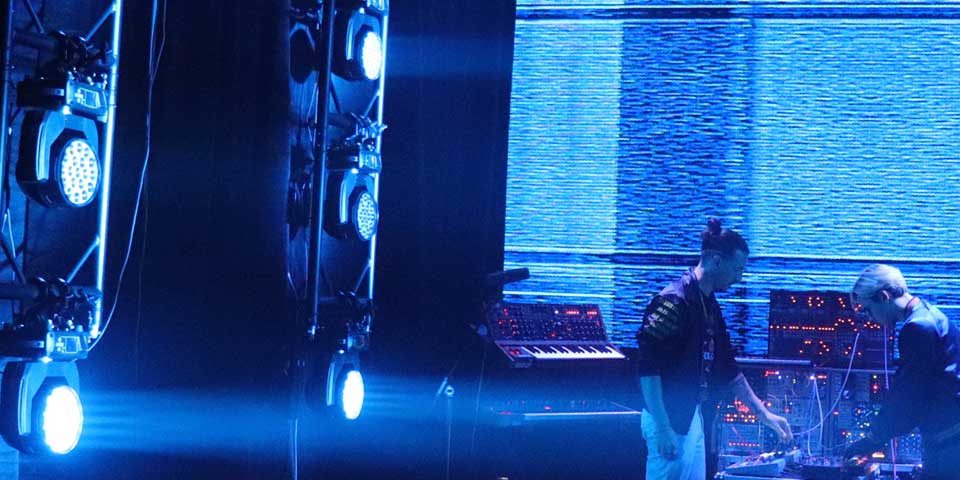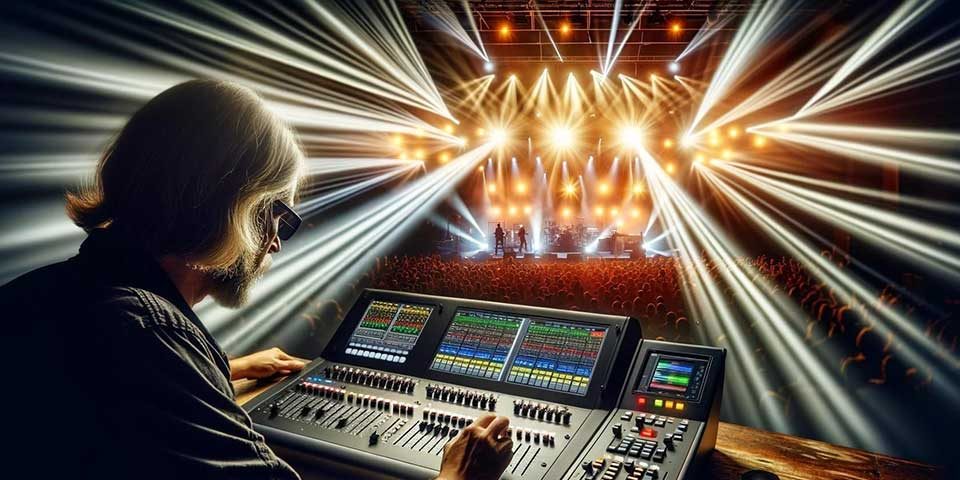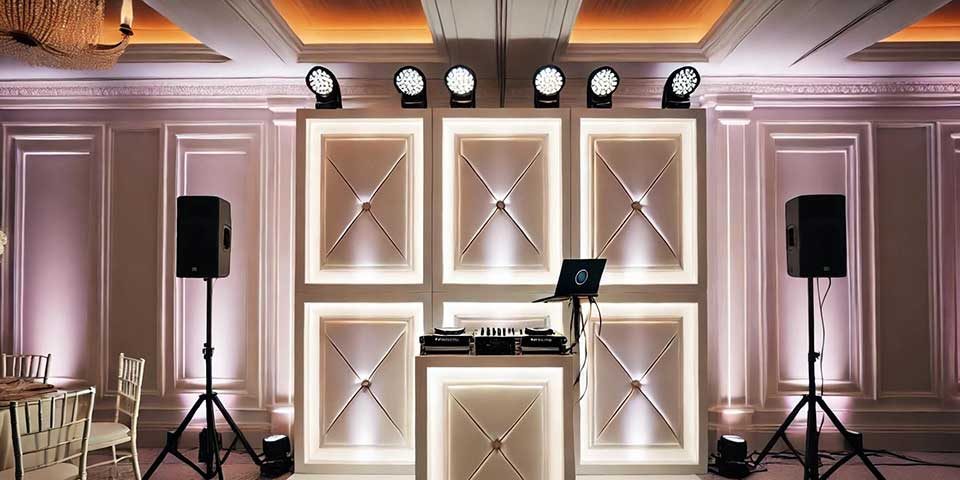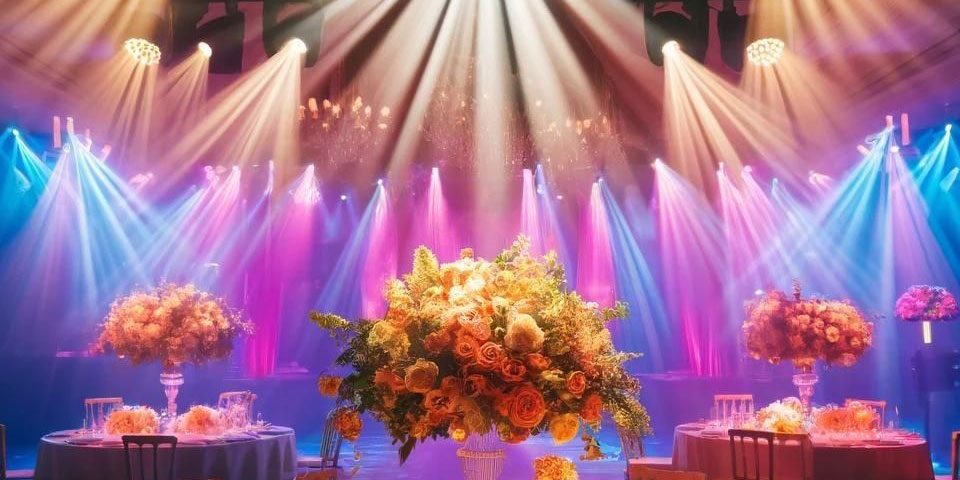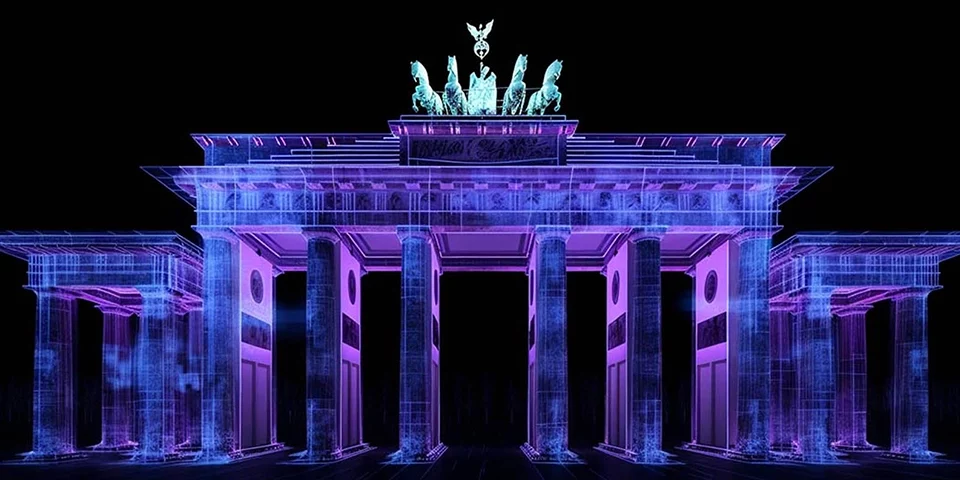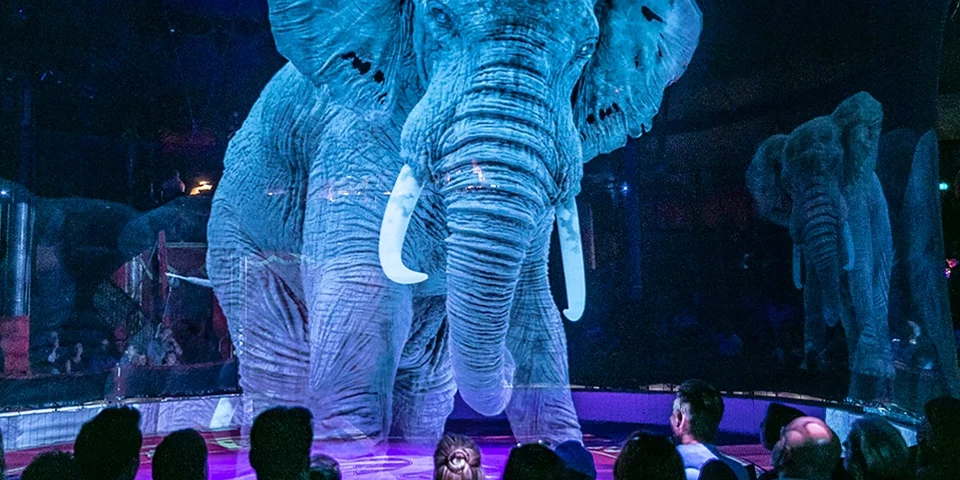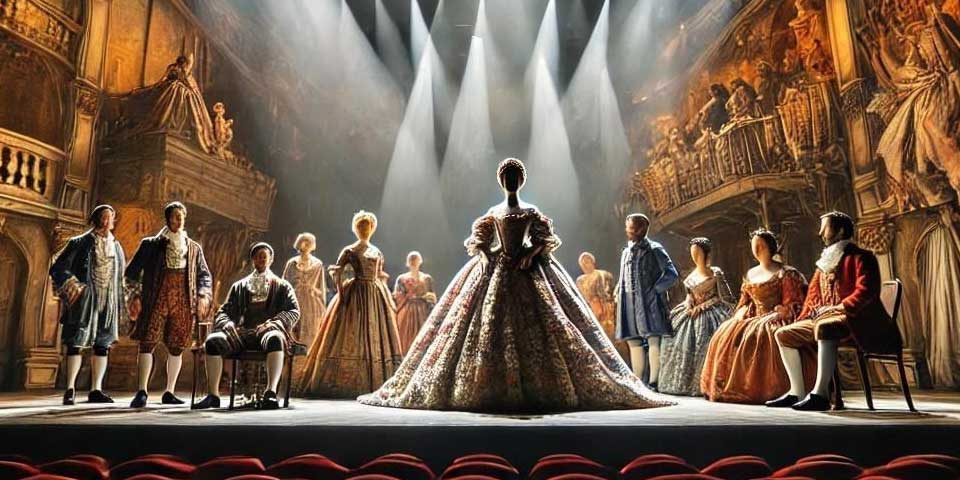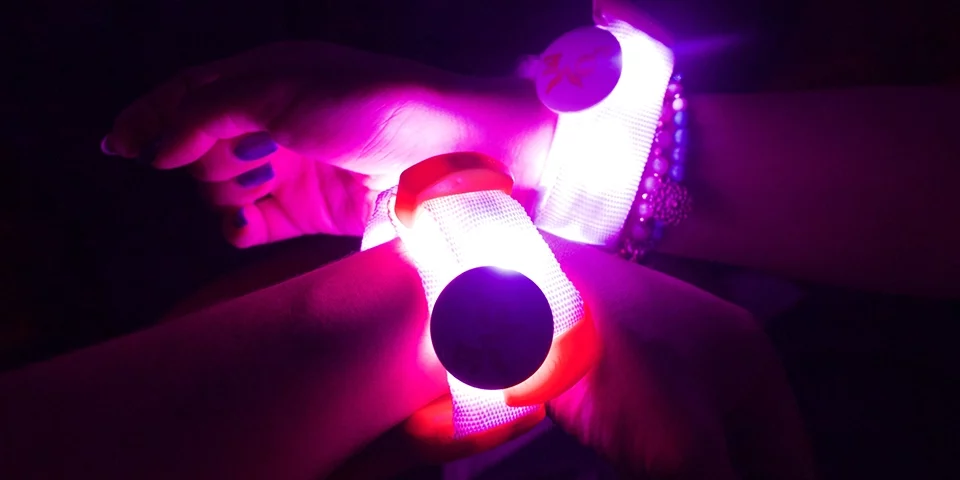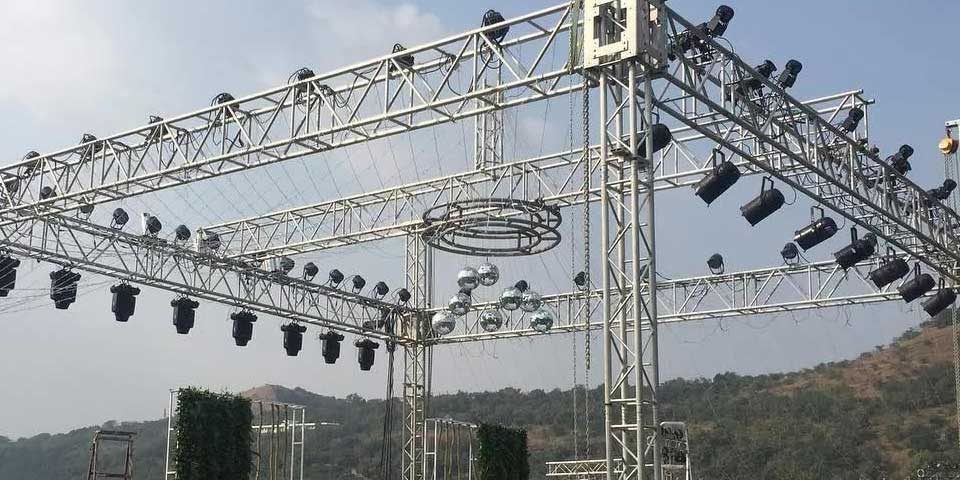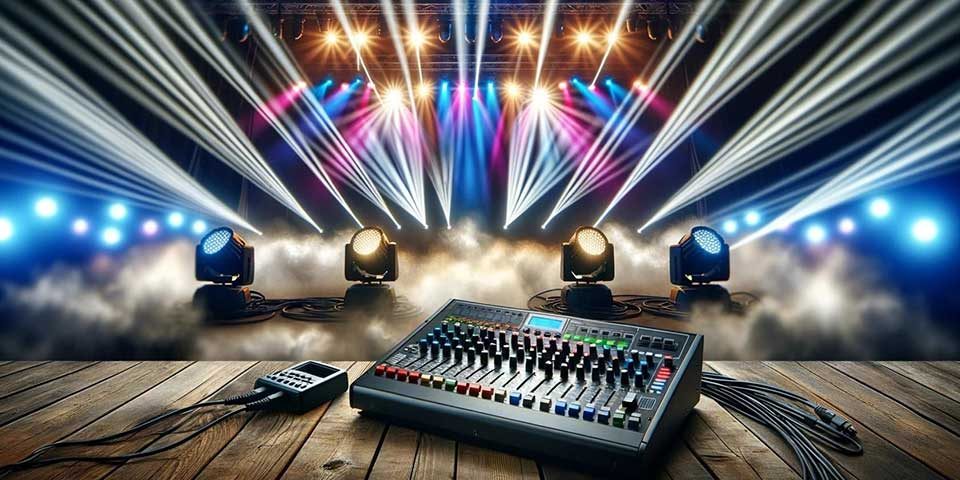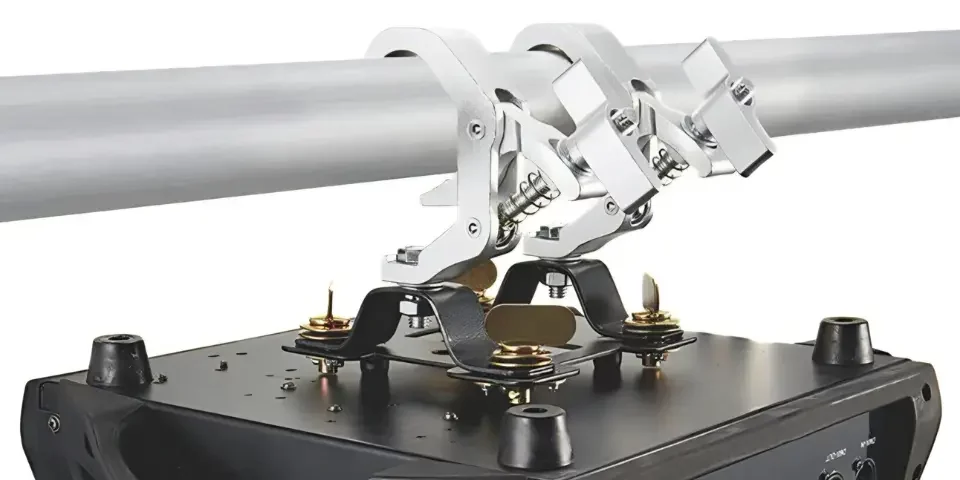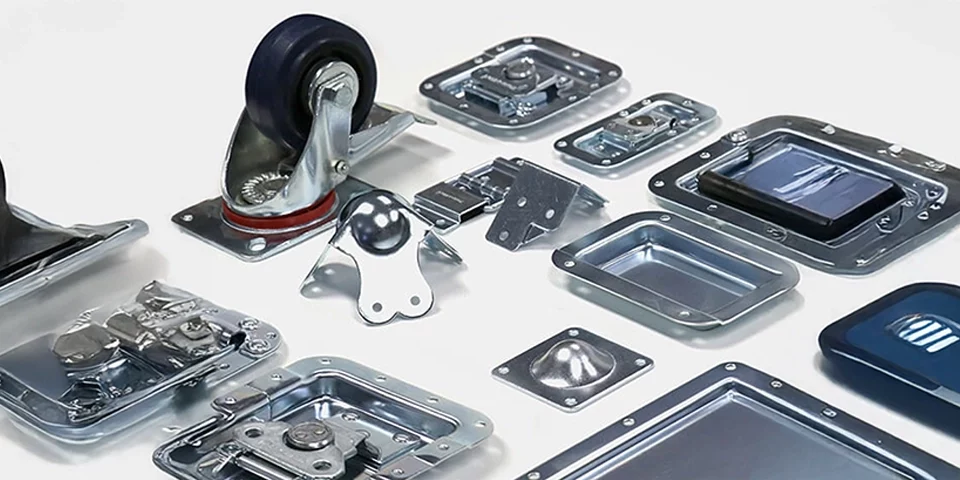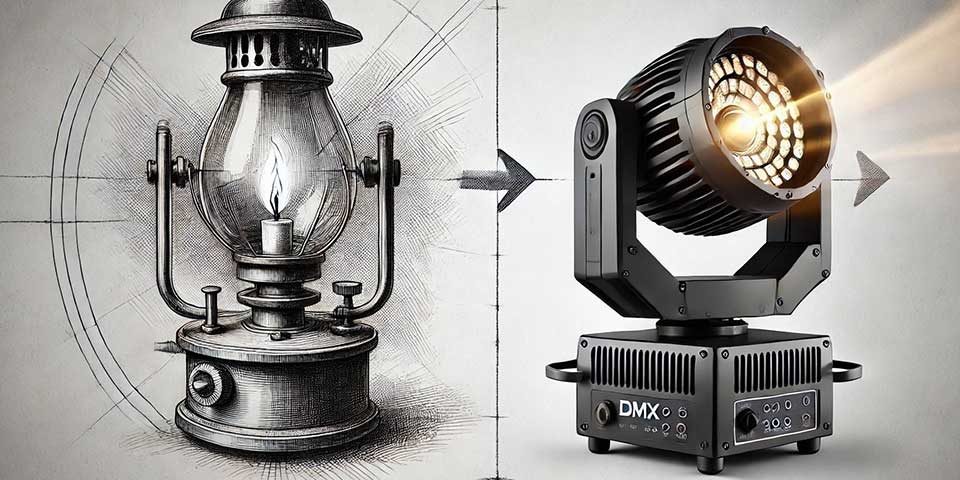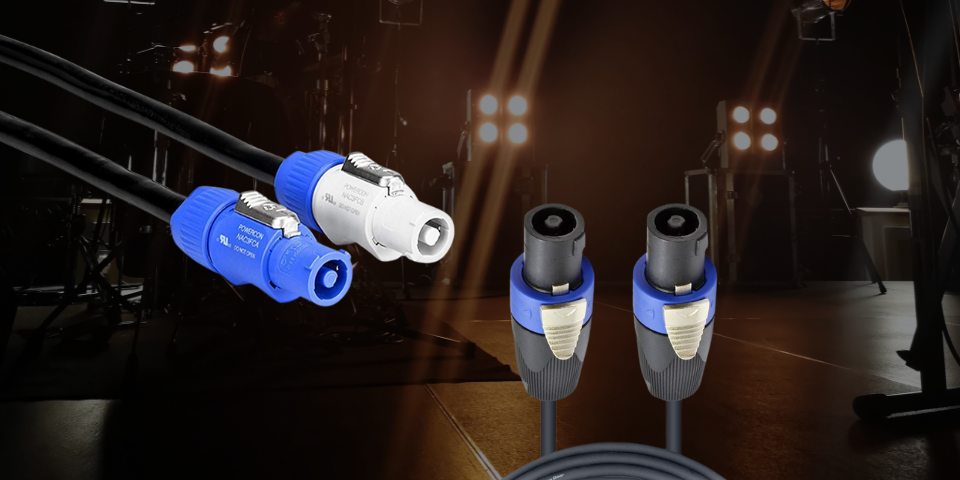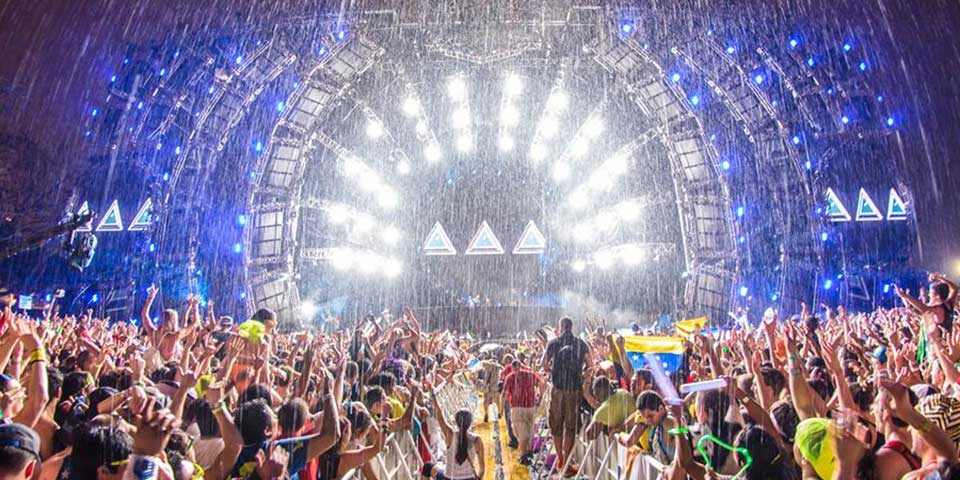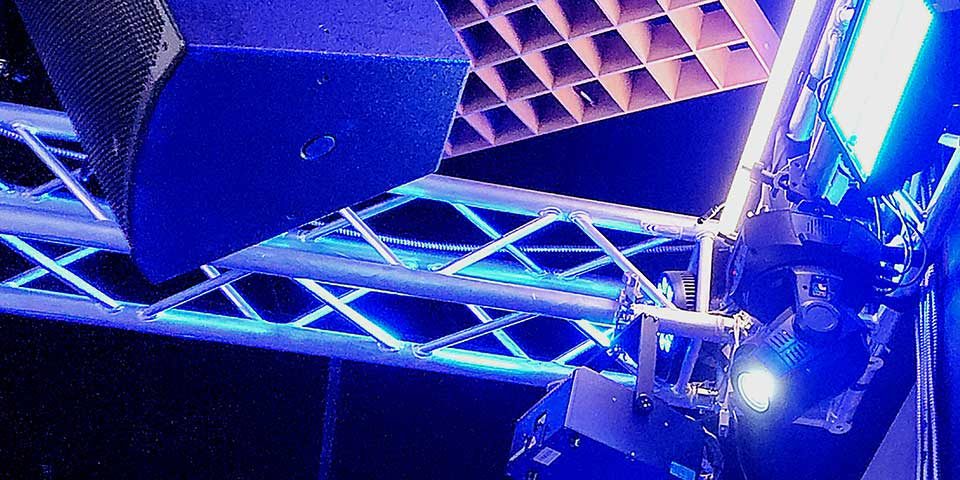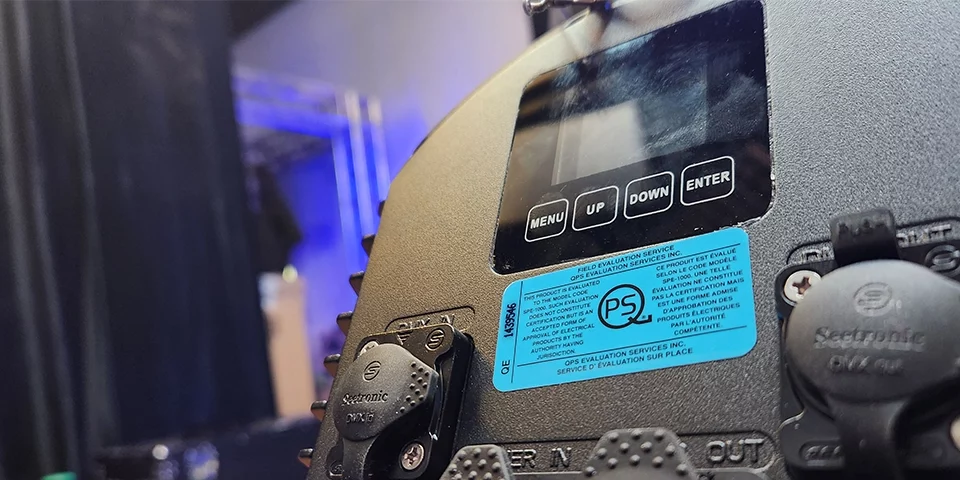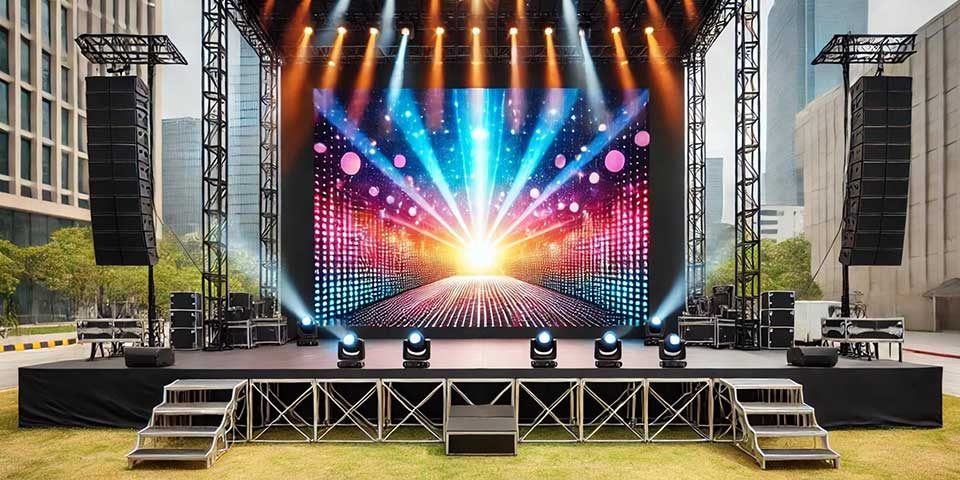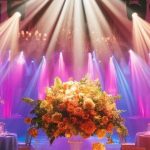
Pin Spot Lighting: An Ambient Lighting Setup Guide

Midas M32R: Digital Mixer Review

Pin Spot Lighting: An Ambient Lighting Setup Guide

Midas M32R: Digital Mixer Review
Stage Lighting Terms Every Lighting Designer / Lighting Technician Needs to Know
INTRODUCTION
Understanding stage lighting terms is crucial for lighting designers and technicians. Mastering these terms not only improves communication with colleagues and clients but also enhances the efficiency and quality of stage productions. This blog covers essential stage lighting terms, from basic fixtures and controls to advanced technical jargon, helping you sound professional and work effectively in any stage setting.
Stage Lighting Terms: Fixtures, Controls, and Accessories
Moving Heads / Moving Head Lights
Definition: Moving head lights are versatile lighting fixtures capable of pan and tilt movements, which allow the light to be directed in any direction. These lights are often equipped with various effects such as color changing, gobos, and zoom functions.
Applications: Used extensively in concerts, theatres, and events for dynamic and flexible lighting effects. For example, a moving head light can follow a performer across the stage, provide sweeping light effects during a concert, or highlight different areas of the stage during a theatrical performance.
LumiOS® STEALTH 250™
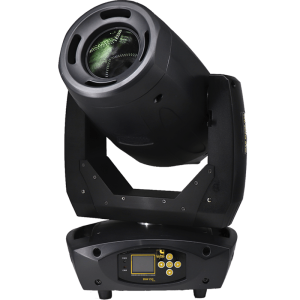
Static Lights
Definition: Static lights, also known as fixed or conventional lights, are lighting fixtures that do not have moving parts. Unlike moving head lights, static lights are positioned in a fixed direction and remain stationary throughout their use. These lights include a variety of fixtures such as PAR cans, ellipsoidal reflectors (ERS), Fresnel lanterns, and more. They are typically used to provide consistent, stable illumination without the dynamic effects associated with moving lights.
Applications: Static lights are essential in various stage and event lighting setups due to their reliability and ability to create specific lighting effects. They are used in theatres, concerts, television studios, and other live events to provide foundational lighting. Their primary applications include:
Wash Lighting: Static lights like PAR cans and Fresnel lights are often used to wash the stage with light, providing general illumination that can cover wide areas uniformly.
Example: In a theatre production, Fresnel lights are positioned above the stage to provide soft, even lighting that covers large sections of the performance area.
Spotlighting: Fixtures such as ellipsoidal reflector spotlights (ERS) are used to highlight specific areas or performers on stage. These lights offer precise control over the beam shape and focus, making them ideal for accent lighting and creating dramatic effects.
Example: An ERS light is used to focus on an actor during a monologue, creating a sharp-edged spotlight that draws the audience's attention to the performer.
Backlighting and Fill Lighting: Static lights are also employed for backlighting and fill lighting to enhance depth and dimension on stage. This helps in creating balanced lighting that prevents shadows and ensures that all elements of the set are visible.
Example: In a concert, static lights are placed behind the performers to create a halo effect and add depth to the visual presentation.
Blinders & Strobe Lights
Definition: Blinders are intense lights designed to momentarily blind the audience, creating a dramatic effect, while strobe lights produce rapid flashes of light to create a sense of motion or excitement.
Applications: Blinders are used in concerts to create a powerful visual impact during climactic moments, and strobe lights are used in dance clubs and concerts to enhance the sense of rhythm and movement.
Chauvet Pro STRIKE Array 2 Blinder

Theatrical Lights
Definition: This term refers to various types of lighting fixtures used in theatre, including spotlights, floodlights, and Fresnels, each serving a specific purpose in lighting a stage performance.
Applications: Used to create mood, highlight actors, and enhance the overall visual experience of a theatrical production.
Pendants / House Lights
Definition: Pendant lights are suspended from the ceiling and provide general illumination, while house lights illuminate the audience area.
Importance: Essential for creating a comfortable and inviting atmosphere for the audience before and after performances.
Chauvet Pro Ovation H-55WW-W Houselight

Ellipsoidal Reflector Spotlight (ERS)
Definition: ERS spotlights, also known as Lekos, produce a sharp, well-defined beam of light that can be shaped using shutters and gobos.
Applications: Ideal for highlighting specific areas or actors on stage and can be adjusted to provide both soft and hard edges.
LumiOS® LEKO 200WW™ Ellipsoidal
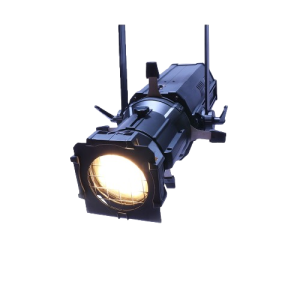
Followspot
Definition: A followspot is a manually operated spotlight used to follow performers as they move across the stage.
Applications: Commonly used in live performances such as concerts, theatre, and dance shows to keep the main performer in the spotlight.
Chauvet DJ LED Followspot 120ST

Fresnel
Definition: Named after its inventor, Augustin Fresnel, this spotlight features a lens with concentric rings, producing a soft-edged beam of light.
Applications: Used for general area lighting and washes, providing a softer, more diffuse light that blends well with other fixtures.
ADJ Encore FR Pro Color Grade 7″ LED Fresnel

PAR Can
Definition: A PAR (Parabolic Aluminized Reflector) can is a simple, robust lighting fixture known for its durability and wide beam spread.
Applications: Ideal for stage washes, concert lighting, and architectural lighting where broad coverage is needed.
LumiOS SMART 80™
LED PAR CAN Light

Pin Spot Light
Definition: A pin spot light is a small spotlight with a very narrow beam, used to highlight specific objects or areas.
Applications: Often used to spotlight tables, floral arrangements, or other small areas in events like weddings or corporate functions.
Chauvet DJ EZpin Pack 4 Battery Powered Pinspot
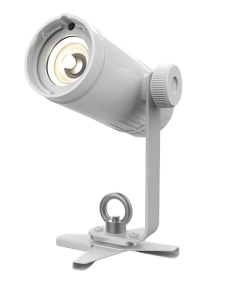
Floodlight
Definition: A floodlight is a broad-beamed, high-intensity light used to illuminate large areas evenly.
Applications: Used in theatres, concerts, and outdoor events to provide general lighting and cover wide spaces.
Elation Paladin Cube Floodlight
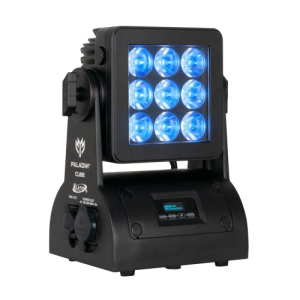
Lighting Terms: Controls and Software
DMX Controllers
Definition: DMX (Digital Multiplex) controllers are devices used to manage and control multiple lighting fixtures from a single console, using the DMX512 protocol. They allow lighting designers to create intricate lighting scenes and control effects across various fixtures.
Applications: Essential for creating complex lighting scenes and synchronized effects in live performances. DMX controllers provide precise control over lighting intensity, color, movement, and other effects.
ChamSys QuickQ 20 DMX Controller

DMX Software
Definition: Software used to program and control DMX-compatible lights, providing a user-friendly interface for designing lighting scenes and shows. These programs allow for complex programming and automation of lighting effects.
Applications: Used in theatres, concerts, and event productions to create detailed lighting plans and control lighting fixtures with precision. For example, using DMX software, a technician can pre-program a light show that synchronizes with music and automate lighting changes throughout a performance.
Obsidian Control ONYX Premier 64 Universe License

Wireless DMX
Definition: A wireless version of DMX control that eliminates the need for cables, allowing for more flexible lighting setups. Wireless DMX uses radio signals to transmit DMX data between the controller and the fixtures.
Uses: Reduces cable clutter and provides more flexibility in arranging lighting fixtures, especially in venues with limited space or complex layouts. Wireless DMX is ideal for temporary setups, outdoor events, and situations where running cables is impractical.
W-DMX Micro F-1 G5 Wireless DMX Transceiver

Stage Lighting Terms: Dimmers and Power Switchers
Dimmers
Definition: Devices that adjust the intensity of lights by varying the power supplied to the lighting fixtures. Dimmers allow for smooth transitions between different lighting levels, which is essential for creating dynamic lighting effects.
Applications: Used to create mood and dynamic lighting effects by controlling the brightness of individual lights or groups of lights. Dimmers are critical for theatrical productions, concerts, and any event requiring precise lighting control. Explore more here.
Power Switchers
Definition: Devices that manage the distribution of electrical power to multiple lighting fixtures, ensuring a stable and balanced power supply. Power switchers help protect lighting equipment from power surges and allow for safe and efficient power management.
Importance: Protects lighting equipment from power surges and overloads, and allows for safe and efficient power management. Power switchers ensure that each fixture receives the correct amount of power, preventing electrical issues that could damage the equipment. Explore more here.
Lighting Cables
Definition: Cables used to connect lighting fixtures to power sources and control systems, essential for any stage lighting setup. These cables are designed to handle the specific electrical and data requirements of stage lighting systems.
Types: Include DMX cables, power cables, and extension cords, each serving a specific purpose. DMX cables are used for data transmission, while power cables provide electrical power to the fixtures. Explore more here.
Dual-Splitter
Definition: A device that splits a single signal into two outputs, allowing one control signal to be sent to multiple fixtures. Dual-splitters are used to expand the control capabilities of a lighting system.
Uses: Essential for expanding the number of fixtures that can be controlled from a single DMX output, making it possible to create more complex lighting setups. Explore more here.
Laser Cables
Definition: Specialized cables designed to handle the high-frequency signals required for laser lighting systems. Laser cables ensure precise and reliable signal transmission between controllers and laser projectors.
Applications: Used to connect and control laser light shows, ensuring precise signal transmission and synchronization. Laser cables are crucial for the effective operation of laser lighting effects. Explore more here.
DMX Cables
Definition: Cables specifically designed for DMX control systems, with shielding to protect against signal interference. DMX cables are crucial for reliable and accurate data transmission in lighting setups.
Importance: Ensures reliable and accurate control of lighting fixtures, minimizing the risk of signal loss or corruption. Properly shielded DMX cables prevent interference that could disrupt the lighting control signals. Explore more here.
Power Cables
Definition: Cables providing power to lighting fixtures, designed to handle the electrical load required by stage lighting systems.
Safety: Key considerations for safe usage include ensuring cables are properly rated for the power requirements of the fixtures and are regularly inspected for damage. Explore more here.
Stage Lighting Terms: Accessories and Safety
Clamps & Safety Cables
Definition: Clamps are hardware used to secure lighting fixtures to trusses or other mounting structures, while safety cables are steel cables used to prevent fixtures from falling if a primary mounting fails.
Safety Tips: Always use safety cables as a secondary support for all overhead fixtures to ensure safety. Properly securing clamps and double-checking their tightness can prevent accidents.
Example: During a stage setup, clamps are used to attach PAR cans to a truss, and safety cables are looped around the truss and fixture for additional security. Explore more here.
Lighting Stands
Definition: Portable stands used to support lighting fixtures when overhead mounting is not available.
Uses: Ideal for small venues, mobile setups, and temporary installations where fixed rigging isn't feasible.
Example: A DJ might use lighting stands to hold moving head lights during a wedding reception to create a dynamic dance floor environment. Explore more here.
Lamps & Bulbs:
Definition: Various types of bulbs and lamps used in stage lighting fixtures, each with specific characteristics and applications.
Types: Include halogen, LED, and discharge lamps, each providing different light qualities and efficiencies.
Example: LED lamps are preferred for their energy efficiency and long lifespan, while halogen lamps are often used for their warm color temperature. Explore more here.
Technical Lighting Terms
Gobo
Definition: A gobo is a stencil or template placed inside or in front of a light source to control the shape of the emitted light.
Uses: Gobos are used to project patterns, shapes, or textures onto a stage or backdrop, enhancing the visual interest of a performance.
Example: In a theatrical production, a gobo might be used to create the effect of tree branches on the stage floor, adding depth and atmosphere to a forest scene.
Gel
Definition: A gel is a thin, colored film placed in front of a light to alter its color.
Applications: Gels are used to change the mood and atmosphere of a scene by adjusting the color of the light.
Example: During a dramatic scene, a blue gel might be used to create a cold, somber atmosphere, while a red gel can evoke warmth and intensity.
Color Temperature
Definition: Color temperature is a measure of the color of light, expressed in degrees Kelvin (K). It describes the hue of a specific type of light source, ranging from warm (yellow/red) to cool (blue/white).
Importance: Understanding color temperature is crucial for creating the desired ambiance and ensuring consistent lighting across different fixtures. Warm light (around 2700K-3200K) is often used to create a cozy, inviting atmosphere, while cool light (5000K-6500K) is used to mimic daylight and provide a bright, energetic environment.
Example: In a TV studio, lighting with a color temperature of around 5600K (daylight) is used to match the color of natural sunlight coming through windows, ensuring consistent and natural-looking lighting on screen.
Beam Angle
Definition: Beam angle refers to the spread of light from a fixture, indicating the angle at which the light is emitted. It determines how wide or narrow the light beam will be.
Applications: Beam angle is crucial for selecting the right fixture for specific lighting tasks, such as narrow beam angles for spotlighting and wide angles for general washes.
Example: A narrow beam angle (10-25 degrees) is used for pin spotlights to highlight specific objects or performers, while a wide beam angle (30-60 degrees) is used for PAR cans to provide broad coverage over large areas.
Foot-candle
Definition: Foot-candle is a non-metric unit of illuminance, representing the amount of light that falls on a surface one foot away from a light source. One foot-candle is equivalent to one lumen per square foot.
Applications: Used in the United States for specifying lighting levels in various settings, ensuring adequate illumination for different tasks and environments.
Example: In stage lighting design, foot-candles might be used to measure and adjust the intensity of light on different parts of the stage to achieve uniform lighting or highlight specific areas.
Lumen
Definition: Lumen is a unit of measurement for luminous flux, indicating the total amount of visible light emitted by a source. It quantifies the brightness of a light source.
Importance: Understanding lumens helps in selecting the appropriate lighting fixtures to achieve the desired brightness for different applications.
Example: LED fixtures are often rated in lumens, making it easy to compare their brightness with traditional incandescent or halogen bulbs. For instance, a 1000-lumen LED light might replace a 75-watt incandescent bulb while consuming significantly less energy.
Lighting Terms: Common Misconceptions
Understanding and correctly using stage lighting terms is crucial for professionals in the field. However, there are several common misconceptions that can lead to confusion and inefficiency. Addressing these misunderstandings can significantly improve both communication and the effectiveness of lighting design.
Gobo vs. Gel
Misconception: Many people believe that gobos and gels serve the same purpose in lighting design.
Clarification: Gobos and gels are used for different purposes. Gobos are templates or stencils placed inside or in front of a light source to shape the light into patterns or textures. They are typically used to project images or designs onto surfaces, adding visual interest and depth to a scene. Gels, on the other hand, are thin colored films placed in front of a light source to alter its color. They are used to change the mood and atmosphere of a scene by adjusting the color temperature of the light.
Example: A gobo might be used in a theatre production to project the image of tree branches onto a stage, creating the illusion of a forest, while a blue gel could be used to create a nighttime ambiance.
DMX Cables vs. Regular Cables
Misconception: Some might think that regular cables, such as XLR cables, can be used interchangeably with DMX cables.
Clarification: DMX cables and XLR cables may look similar, but they are designed for different purposes and have distinct technical specifications. DMX cables are specifically designed to handle the high-frequency signals required for DMX control systems. They typically have a characteristic impedance of 120 ohms, which ensures reliable data transmission with minimal signal loss or interference. XLR cables, commonly used for audio applications, have a characteristic impedance of around 75 ohms and are not optimized for the data requirements of DMX control. Using XLR cables for DMX applications can lead to unreliable performance and signal degradation.
Example: In a professional stage setup, using DMX cables ensures that the control signals sent from the lighting console to the fixtures are transmitted accurately and without interference, whereas using XLR cables could result in flickering lights and inconsistent behavior.
conclusion
Understanding and correctly using these stage lighting terms is essential for enhancing professional communication and efficiency in any stage production setting. Whether you are an aspiring stage technician, an event planner, or a theatre director, mastering these terms will significantly improve your ability to create stunning and effective lighting designs. By addressing common misconceptions and using the appropriate equipment and terminology, you can ensure that your lighting setups are both reliable and visually compelling.
For more information and to explore a wide range of stage lighting products, visit the stage lighting category page on GTR Direct. Here, you will find everything you need to support your lighting projects, from fixtures and controllers to cables and accessories.


